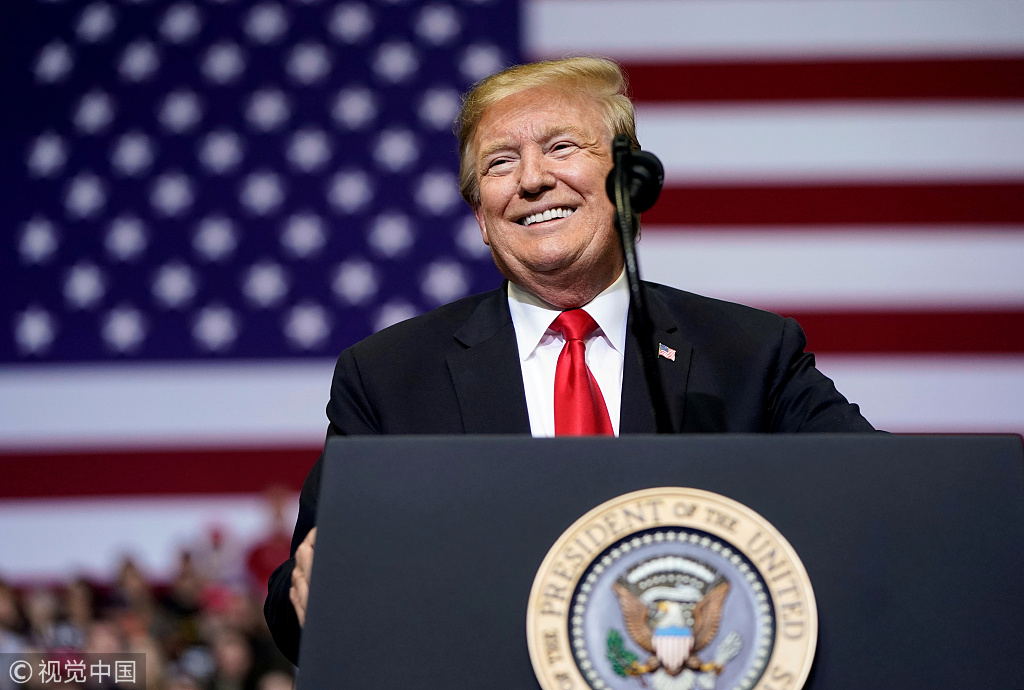Zogby: 'Polls are best used as a snapshot'
By SCOTT REEVES in New York | China Daily Global | Updated: 2019-07-22 23:06

The 2020 race for the White House is well underway, and so are the polls.
A number of recent polls have shown President Donald Trump trailing those leading the pack of Democrats seeking their party's nomination. But Trump has always dismissed those polls, or at least those he doesn't like, as more examples of "fake news".
Is it possible to accurately handicap the current stampede of Democratic candidates and make a reasonable estimate about who might win, or at least who's ahead?
"Polls are best used as a snapshot in time because there are so many variables involved: when and how the poll was taken, weighting the demographics and oversampling certain groups," Jonathan Zogby, CEO of Zogby Analytics, told China Daily. "Polls capture a moment in time, almost inside a bubble, and that bubble can burst."
An accurate survey depends on the pollster's skill in selecting a random sample and finding the right mix of respondents to match turnout on Election Day.
"Accuracy depends on sample size, demographics, the margin of error and correctly modeling voter turnout. What pollsters have done for the last 10 to 15 years isn't working because there's a growing disparity between the popular vote and the electoral map."
Only about 50 percent of households still have a landline telephone, making it harder to get a meaningful sample. Older voters tend to have landlines, while younger people rely on smartphones.
Who answers a pollster's call — and who doesn't — can skew results. To overcome such problems, many pollsters now include online responses as part of a survey, but a self-selected sample also can create bias, Zogby said.
Early in its development, polling created major failures. In the 1936 presidential race, Literary Digest, which had accurately forecast winners since 1916, said Republican Alf Landon would receive 57 percent of the vote to Franklin Delano Roosevelt's 43 percent based on 2.4 million responses from a sample size of 10 million. On Election Day, Roosevelt won 62 percent of the vote.
The poll, relying on mail-in responses, drew its sample from middle- and upper-class magazine subscribers, club membership lists and telephone subscribers while largely ignoring workers and the 9 million unemployed.
In short, the poll oversampled those who tended to be better educated and more conservative than the electorate as a whole. The lesson was that a bad sampling method can't be corrected by a large sample.
The survey sample must be randomly selected to avoid repeating the Literary Digest debacle. It then must reflect voters' differences in age, sex, race, education and geography. Blacks, whites, Hispanics and Asians are likely to have different opinions based on their cultural backgrounds.
In the 2016 presidential election between Democrat Hillary Clinton and the Republican Trump, the Real Clear Politics average of the final round of national polls before the election showed Clinton leading Trump by 2.1 percentage points, her margin in the final popular vote.
The result was accurate but irrelevant because the United States votes as 50 states — not as a nation — when electing a president. The Electoral College, not the popular vote, determines the winner. Electoral College votes are determined by a state's number of representatives in the House plus its two senators.
Polls of individual battleground states would have been more valuable in assessing the race because nationwide polls missed Trump's strength in Midwestern states that carried him to victory while overstating the importance of Clinton's strength in the Northeast and on the Pacific Coast.
"Some polls in 2016 oversampled Democrats," Zogby said. "That meant they missed the surge Trump created in the Republican base. In 2020, many voters may say they don't like Trump and plan to vote for the Democrat, but when they get in the voting booth, peace and prosperity might weigh more heavily on their decision."
During presidential primary elections, many polls sample a state's registered voters. But what's more important is likely voters, those who turn out on Election Day. During the presidential race, most polls sample only likely voters after questioning respondents about their interest in the race and if they had voted in prior elections.
"Pollsters can get it wrong because it's difficult to get into voters' psyches," Zogby said. "No science is perfect, and polling is not a perfect science."
























